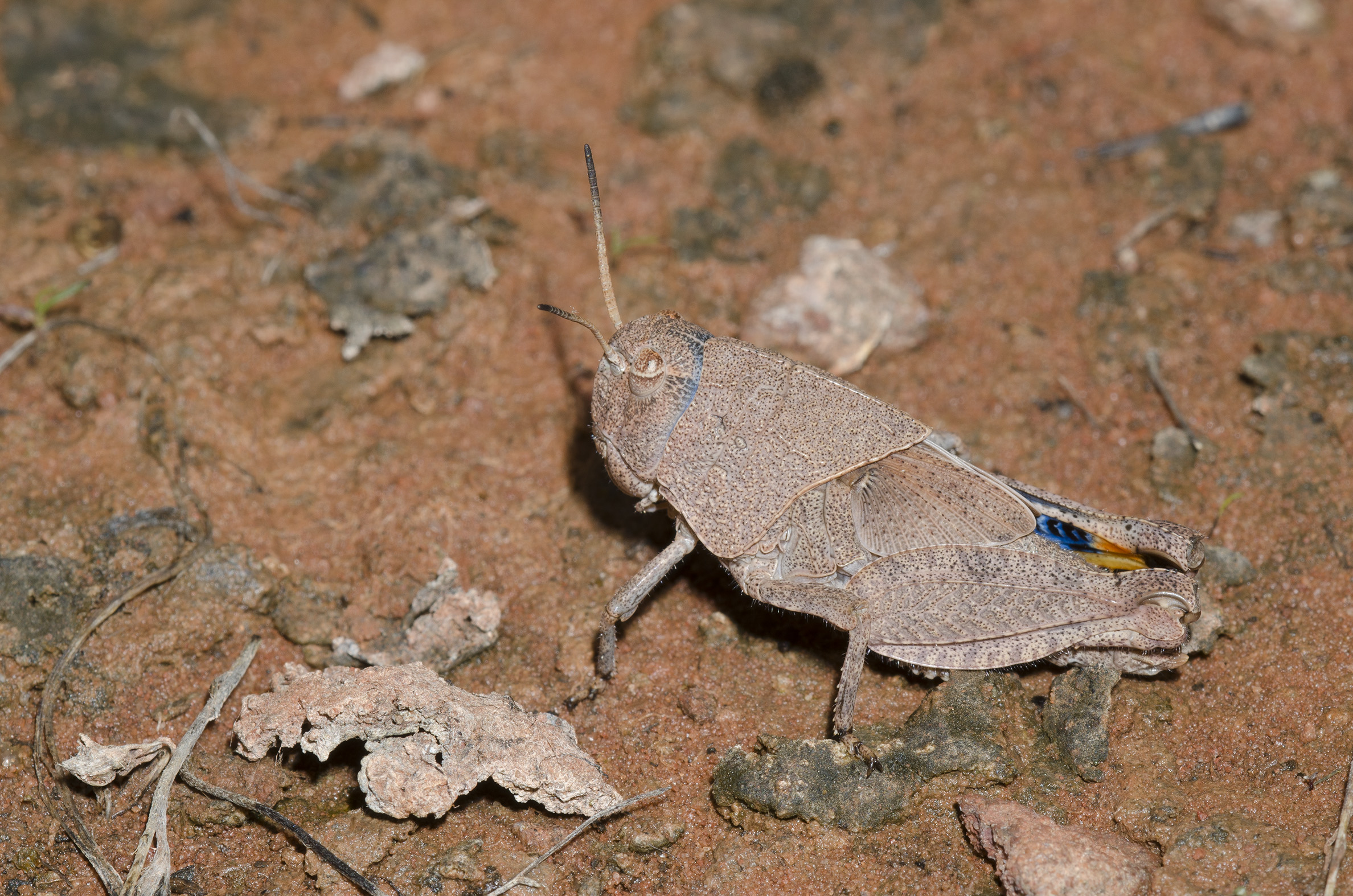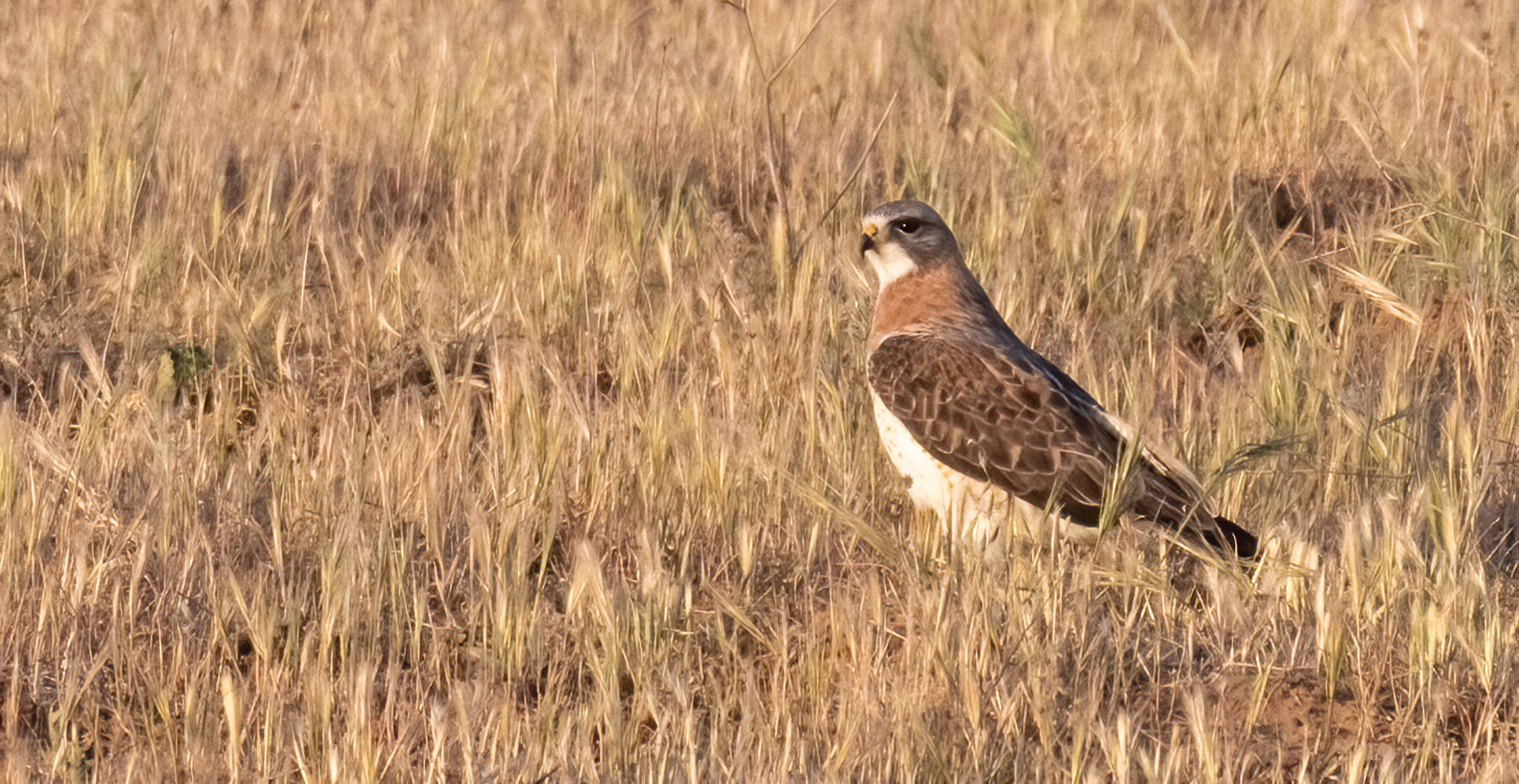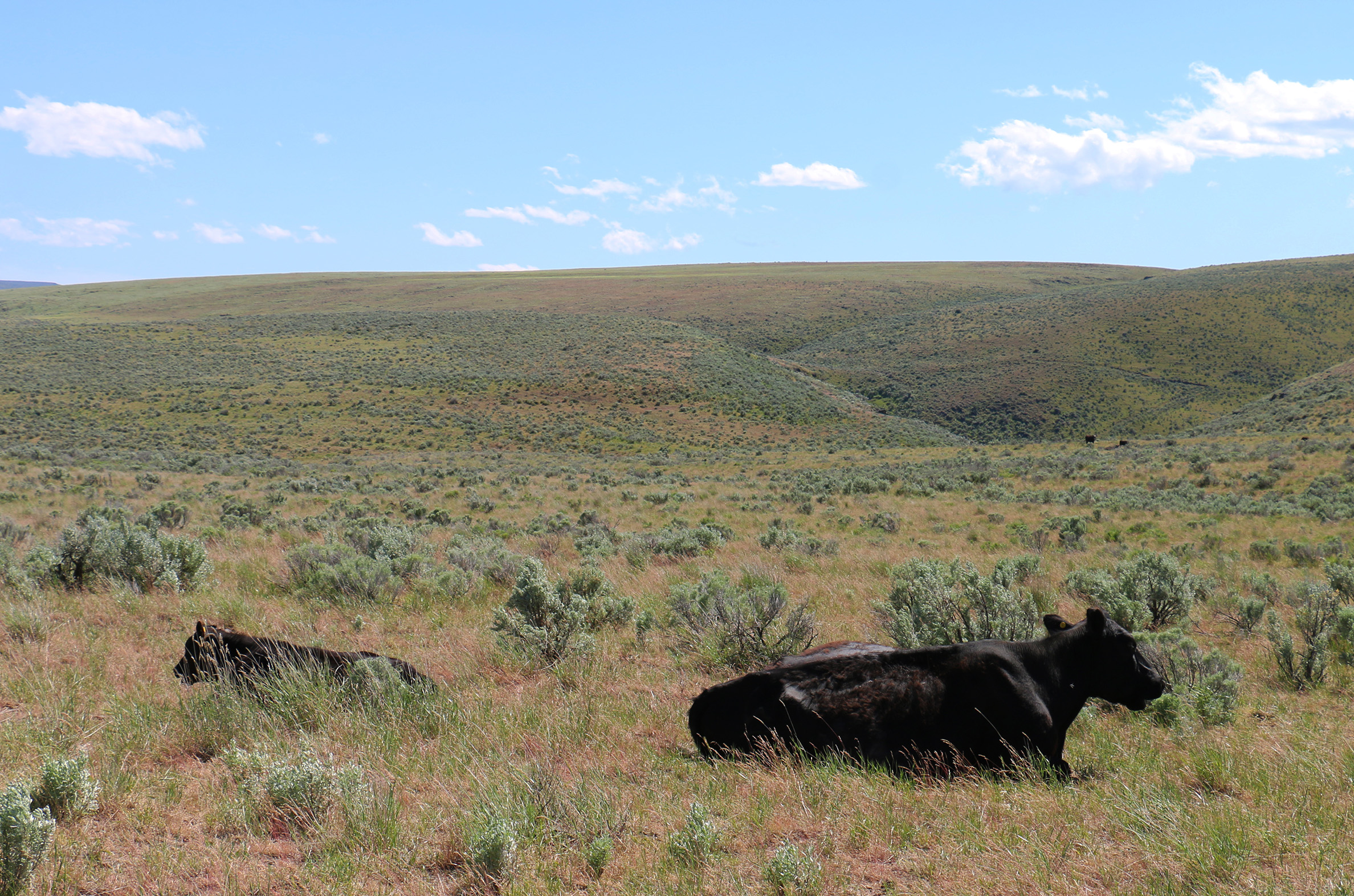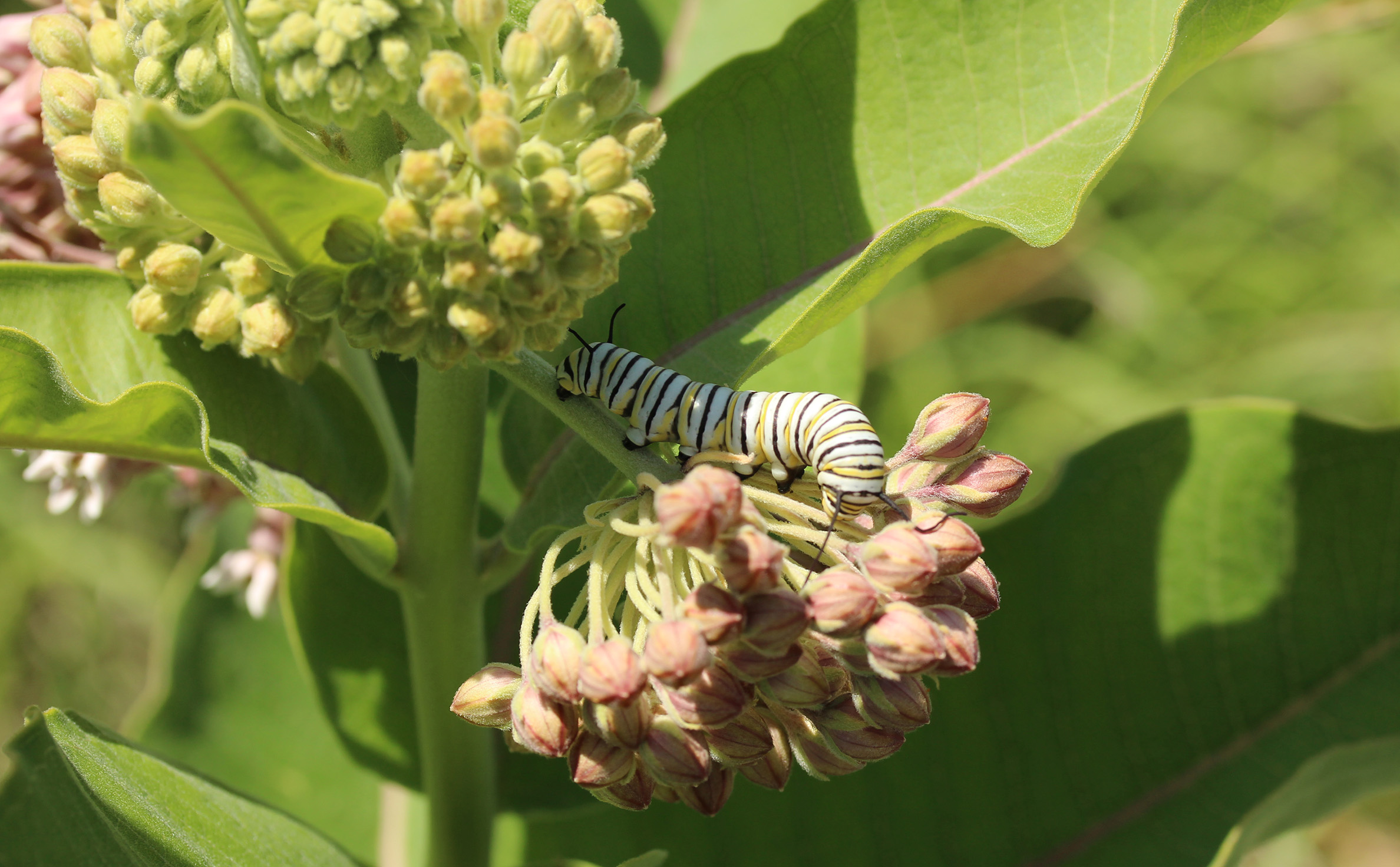The wide, open spaces found in the western United States are home to many amazing species from greater sage-grouse to monarch butterflies. Due to the dry climate, the lands are often unsuitable for crops but are frequently used for grazing. These rangelands are also where large concentrations of federal public lands are found, most managed by the Bureau of Land Management (BLM).
We recently heard that by June or July, we may see the largest acreages of western rangeland sprayed with insecticides since the mid-1980s. For reference, from 1985–1988, nearly 20 million acres of western rangelands were treated against grasshoppers and Mormon crickets.

Vast areas of the western United States are covered in rangelands, landscapes that are often used for cattle ranching. These grasslands also support a diverse community of insects, birds, and other wild animals. A significant proportion of rangelands are publicly owned, so how they are managed, especially when it comes to grasshopper control, is a topic of great concern. (Photo: Bureau of Land Management.)
A lot has changed since the mid-1980s, including the fact that the western migratory population of monarch butterflies has plummeted from 4.5 million to under 2,000 today—a 99.9% decline. East of the Rockies, the eastern monarch population has also fallen from the hundreds of millions that used to grace the landscape, but less sharply, by only 80%.
Responding to a petition submitted by the Xerces Society and conservation partners, the U.S. Fish and Wildlife Service announced in December 2020 that protection for the monarch was “warranted but precluded,” which means the butterfly met the requirements for protection but would not be immediately protected due to “higher priority” concerns. Still, a determination of warranted but precluded means that the monarch becomes a “candidate” for listing, and if nothing else, candidate species typically begin to receive conservation attention. In making this decision, the USFWS identified the use of herbicides and insecticides as two of the primary drivers of the monarch’s decline.
Another thing that has changed since the ‘80s is that U.S. Department of Agriculture’s Animal Plant Health Inspection Service (APHIS), the agency that oversees grasshopper and Mormon cricket monitoring and suppression in the western states, has switched its choice of insecticide. Rather than spraying the “old school” organophosphates malathion and carbaryl—two insecticides known to be highly toxic to just about everything—to kill grasshoppers, APHIS now mostly uses an insecticide called diflubenzuron. This is an insect growth regulator, which inhibits the formation of chitin, an important component of an insect’s exoskeleton. Each time any invertebrate grows, it sheds its old exoskeleton and builds a slightly larger one—a process that diflubenzuron disrupts.

Chitin is a key component of insect exoskeletons. Grasshopper sprays use an ingredient called diflubenzuron which prevents insects from forming chitin properly, resulting in death of exposed juvenile insects before they reach adulthood. (Photo © Bryan E. Reynolds.)
So what’s affected by diflubenzuron? Well, just about every creature Xerces strives to protect. In addition to the grasshoppers, that means bees, butterflies, moths, beetles, and many other rangeland insects, as well as aquatic invertebrates, such as small stream insects that are important food for trout and salmon. It also impacts other arthropods, such as spiders and mites, and mollusks. (Interestingly, mushrooms and fungi also contain chitin and could be affected as well.)
Let’s not forget birds that rely on grasshoppers as essential foods. Greater sage-grouse, pheasants, turkeys, prairie grouse, harriers, Cooper’s hawks, Swainson’s hawks, kestrels, plovers, sandpipers, gulls, cuckoos, short-eared owls, burrowing owls, shrikes, horned larks, bluebirds, catbirds, thrashers, grassland sparrows, dickcissels, bobolinks, and meadowlarks consume grasshoppers as a great proportion of the juvenile food and in some cases for 30–90% of the adult staple diet.

A wide variety of rangeland birds—from bobolinks to meadowlarks to Swainson’s hawk, shown here—consume grasshoppers. Birds are important regulators of grasshopper populations and need to be conserved to minimize future outbreaks. (Photo: Wendy Miller [CC BY-NC-ND 2.0])
Some APHIS officials describe the control efforts as “environmentally sensitive” and even “bee-friendly.” While in some ways, using diflubenzuron is better than the chemicals that were preferred in the past, it is not “bee-friendly.” APHIS still sprays very large blocks by air. Blocks measuring 100,000 acres or larger are not uncommon, with the planes flying up and down in a series of parallel swaths. Little refuge for the plethora of non-target insects present in these blocks is available because even though APHIS usually skips every other swath when treating, drift from the insecticide release heights—up to 75 feet above the ground—is predicted to result in insecticide residues at concerning rates throughout the block, even on the untreated sections.
Most invertebrates have relatively low mobility and can’t easily move out of harm’s way, especially the larval stages that are most vulnerable to diflubenzuron. Even flying insects like bees often have very small home ranges—many native species live out their lives within about 100 yards of their nest. We know that diflubenzuron can kill larval honey bees at the predicted levels of deposition, and bumble bees appear more sensitive. While EPA records no studies that identify the level at which diflubenzuron would be expected to be toxic to monarch larvae, based on test results on other moth and butterfly caterpillars, we expect that monarch caterpillars within treatment areas will also experience mortality.
Given treatment schedules in June or July when flowers are blooming and insect reproduction is in full swing, there is little doubt that millions of bees, butterflies, and other beneficial insects will perish this summer if APHIS goes forward with its draft plans for largescale spraying. Should these insects, that are so important to ecological systems and people, just be collateral damage?

Maintaining healthy vegetation cover by not overgrazing is one strategy to limit grasshopper outbreaks. Rotational grazing is associated with significantly fewer adults of the migratory grasshopper, a species that commonly experiences outbreaks, because the nymphs develop more slowly and are less likely to survive under the conditions this creates. (Photo: Bureau of Land Management.)
So, where will the sprays, possibly bigger than any in the last three decades, happen this year? No one outside of APHIS quite knows yet, but it seems likely, based on recent history, last year’s adult counts, and recent statements from APHIS, that large areas will be sprayed in eastern Montana, Wyoming, and eastern Oregon. Still, any of the western rangelands may see applications.
The irony is that grasshoppers are being sprayed on public lands to protect forage for cattle, and sometimes to diminish the potential of high grasshopper populations developing on private lands, even though heavy grazing may be associated with worse outbreaks. Moreover, grasshopper sprays have been justified as forage protection even though fees received for grazing on federal lands are so miniscule that they can’t cover the cost of administering grazing properly, much less cover the costs of aerial sprays. In fact, one thing that hasn’t changed since the mid-1980s are federal grazing fees, which were $1.35 per cow–calf pair in 1987—and they remain $1.35 today. Federal public rangelands are important for conservation purposes, not just grazing. It might be cheaper, not to mention ecologically preferable, just to buy replacement hay for the cattle under lease.
Western rangelands need long term management plans that will restore areas that are often overused. We acknowledge that some adjacent farms might be very worried this year about the current situation. We see this for the challenge that it is. And, we maintain that large-scale, broadcast applications are not the solution for anyone.
Back to the monarch. While technically consultation on candidate species is optional, it is normal for the U.S. Fish and Wildlife Service to include candidate species in its Official Species List that it forwards when an agency is considering an action.
Curiously, this year, even though USFWS provided Official Species Lists to APHIS after December 2020, the monarch was omitted. As a result, APHIS neither acknowledged the crisis engulfing monarchs or considered the impact of its program on this species or its habitat in the environmental assessments completed this year. This was a major missed opportunity. One simple mitigation would have been to identify all milkweed stands and create a 1,000-foot buffer around each one in advance of any spraying. The Western Monarch Milkweed Mapper is one place to start for identification of known milkweed stands.

The U.S. Fish and Wildlife Service recognizes that the monarch butterfly is vulnerable to extinction, yet no mention of protections for the monarch or its milkweed host plants was included by APHIS in this year’s grasshopper spray programs. (Photo: Jennifer Hopwood.)
Ways to Help
Things don’t look good and we want your help. Most people don’t know about the widespread aerial application of insecticides to kill grasshoppers. Spray areas are often remote and thinly populated. APHIS outreach focuses on local communities and tends to leave out those who may use public lands for recreation but not live nearby. Even fewer people understand the risk these sprays pose to pollinators and insects that provide natural pest control.
Please help us spread the word about the risk of these sprays now, before they occur this summer. We suggest posts on Facebook, Twitter, Instagram, Next Door, TikTok, or any other social media platform that you like. Link to this blog, and add the text for posts suggested below—or write your own.
Aerial insecticide spraying for grasshoppers threatens the monarch butterfly, which is already vulnerable to extinction. #aphis #NoSpray #SaveTheMonarch #ProtectNativeBees
Millions of larval bees, butterflies, and other beneficial insects will perish this summer if APHIS goes forward with largescale grasshopper spraying over rangelands. #aphis #NoSpray #Pollinators #ProtectNativeBees
Allowing aerial insecticide spraying over hundreds of thousands of acres of western rangelands with minimal oversight or transparency is not acceptable. Instead of poisoning our environment, why not compensate ranchers for forage loss? #aphis #NoSpray
The monarch butterfly may be harmed by aerial spraying on public rangelands! Tell APHIS to identify and buffer out all milkweed stands and consider cash compensation rather than toxic sprays. #aphis #NoSpray #SaveTheMonarch #ProtectNativeBees
We need better solutions to grasshopper outbreaks, not toxic insecticides. Proper grazing management has a role to play. #blm #NoSpray #ProtectNativeBees
You can also help by sending letters to the editor, your Congressional representatives, and the agencies Bureau of Land Management and APHIS (send letters to the state offices in your state or in Montana, Wyoming, and Oregon). Use as the information above or the suggested social media posts as talking points in your letters.
Let us know if you submit a letter—and thanks!
Further Reading
Download comments submitted to APHIS by Xerces Society and conservation partners about spraying programs in Montana proposed for summer 2021.
Read more on our blog: Home on the Range: Grasshoppers and Insecticides on Western Rangelands
Learn more about the importance of grasshoppers to rangeland ecosystems and the impact of control programs in the spring 2021 issue of our magazine, Wings.
Read about the ecological importance of grasshoppers in the fall 2008 issue of Wings.




